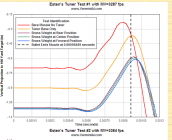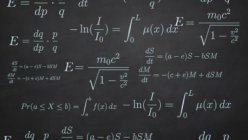I think your terminology is off. Your practical understanding may be correct but the wording of that statement is incorrect.
View attachment 1312782
A wave node cant be at the muzzle end because it is unsupported. The muzzle will always be an antinode for the different standing harmonic vibration modes in a free floated rifle barrel supported on one end (the action).
A good analogy for the position of the muzzle of a rifle barrel is a pendulum. The muzzle is moving the fastest in the middle (neutral unflexed strait position) of its wave. After the barrel crosses that center of the wave it begins to progressively slow down until it stops at its maximally flexed position and reverses direction. It starts to speed up from that point achieving max velocity as it crosses the unflexed center point and starts the process again going to the other max flexed side. The blue graph shows velocity vs time for these positions and the red graph shows the position vs time. You can see at the bottom position (D) the velocity is at max in the blue graph and has the neutral position in he red graph. And you can see the sides (A&G) have zero velocity in the blue graph and peak positions on the red graph.
View attachment 1312787
The two best positions are the max flexed positions. Close range bench rest guys will likely tune with shots falling as close to the peak as possible. BAB positions and GFG positions and exit timings as those spots have the least muzzle movement vs time hence the best raw accuracy.
Long range shooters need to use positive compensation to limit their vertical due to velocity spread so they likely tune on GFE or CBA positions and timings to insure their slower bullets are launched at a slightly higher angle to add some of the lost elevation at long range due to being slower.
Tuners do a few things. They do change the node points but that's a secondary concern really as some barrel movement is good for accuracy at extended ranges. The primary effects are these.
They lower the frequency of the vibrations making tuning windows larger.
They lower the amplitude of vibrations in the horizontal plane and give the barrel a more vertically oriented vibration pattern.
They allow you to change the vibration frequencies to change the point on the wave the bullet exits without having to adjust the seating depth of the bullet or powder charge. A simple dial on the end of the muzzle can make fine changes to where on the wave the bullet exits but does not change the bullets actual exit time to an appreciable degree.












